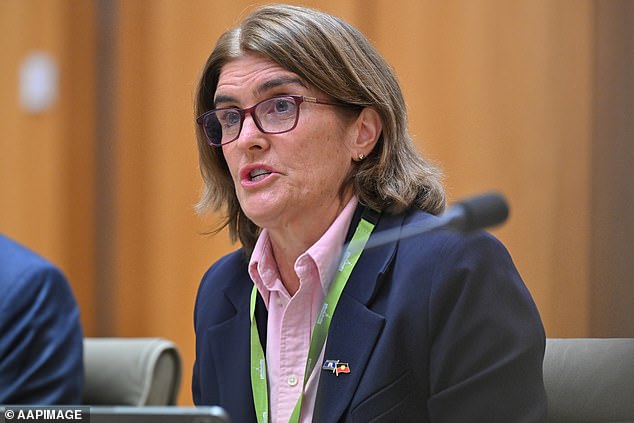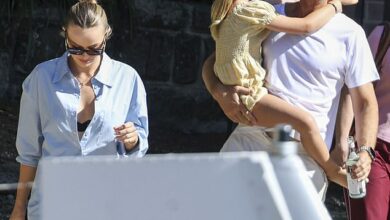Bad news for millions of Australians as Reserve Bank gives big hint on inflation

The Reserve Bank has strongly suggested that interest rates could rise again as inflation takes longer than expected to subside.
The cash rate was left unchanged at 4.35 percent last month, the highest level in 12 years, but minutes of that meeting warned that inflation remained stubbornly high.
“In concluding the Board’s statement, members agreed that it was important to make clear that the information received since the last meeting has emphasised the need to be vigilant for upside inflation risks,” the report said.
‘The level of uncertainty at this point means that it is difficult to approve or reject future changes to the cash rate target.’
The RBA meeting on 17-18 June came before the official figures were released, which showed inflation had risen by 4 per cent in the year to May, still above the Reserve Bank’s target of 2-3 per cent.
The Reserve Bank’s latest forecasts expect inflation to fall to 2.8 percent by December 2025.
But minutes from the June meeting, released Tuesday morning, suggested it could take a little longer for inflation to subside.
This is bad news for the 3.8 million Australian households with a mortgage.

The Reserve Bank has strongly hinted at the possibility that interest rates could rise again as inflation takes longer than expected to subside (pictured is Governor Michele Bullock)
“Members agreed that the collective data received since the May meeting were not sufficient to change their assessment that inflation would return to target levels by 2026, despite the increased upside risk around the forecast,” the Reserve Bank minutes said.
The minutes of the meeting also showed that the RBA board had discussed raising the cash rate.
“Raising the cash rate at this meeting could be appropriate if members consider that policy settings are not restrictive enough to bring inflation back to target levels within a reasonable time frame,” the report said.
Furthermore, the word ‘inflation’ was mentioned 44 times in the minutes of the June meeting, while this only occurred 47 times during the May meeting.
But the 30-day interbank futures market now sees a 32 percent chance of another rate hike in August, when the RBA meets again, up from 5 percent on June 18, when the Reserve Bank last announced its decision.
After the RBA’s last meeting, Ms Bullock confirmed that her board had considered a rate hike during the two-day meeting.
“Yes, the board discussed raising interest rates at this meeting,” she told reporters.
Australia’s most powerful central banker also confirmed that there has not even been any discussion of a rate cut, despite mortgage borrowers facing the most aggressive rate hikes since the late 1980s.
“No, no budget cuts have been taken into account,” she said.

The cash rate was held at 4.35 percent last month, the highest level in 12 years, but minutes of that meeting warned that inflation remained stubbornly high.
A further rate hike would take the RBA’s cash position to a new 13-year high of 4.6 per cent and add $100 a month to the repayments on an average $600,000 mortgage.
While unemployment remains low at 4 per cent, the number of bankruptcies is at its highest level since the 2012-13 budget year. The RBA acknowledges that this could lead to higher unemployment.
“Members recognised that while the current level of bankruptcies relative to all businesses is not unusual, a continuation of the rapid increase in bankruptcies in the coming months would have a negative impact on labour demand,” the minutes said.
The Reserve Bank will meet on August 5 and 6, following the publication of more comprehensive inflation figures for the second quarter of 2019 on July 31.
Two of Australia’s four largest banks – ANZ and NAB – now expect the Reserve Bank to delay any rate cut until 2025.




